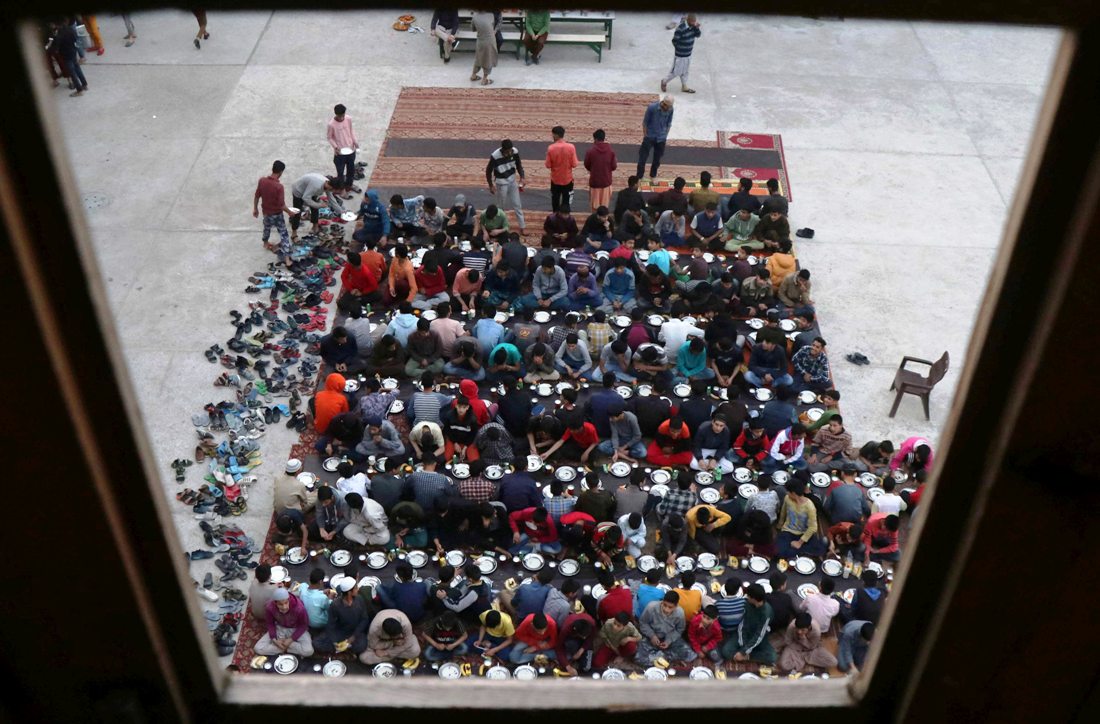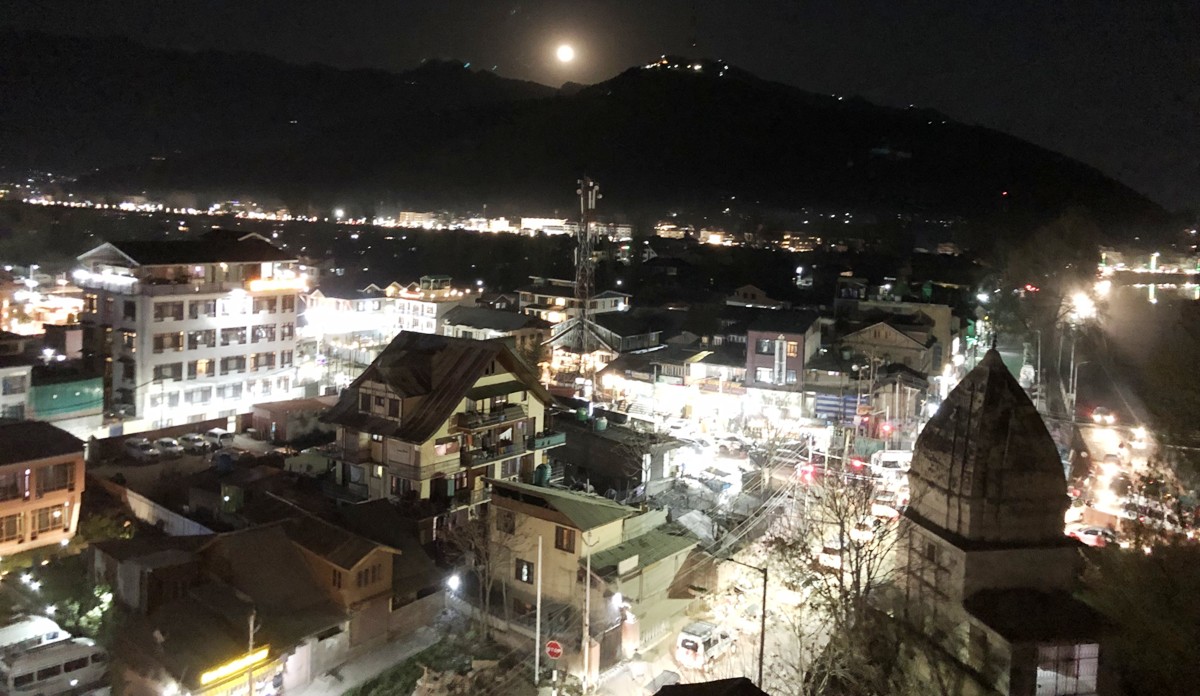Less working hours, compromised production, a surge in consumption and a visible impact on earnings during the Muslim month of fasting do not prevent charity and positive subjective well-being of Muslims, writes Humaira Nabi
As the crescent moon appearance marks the beginning of Ramzan, Muslims worldwide embark on a profound spiritual journey, embracing the practice of fasting, prayer, and benevolence. However, beyond its religious essence, the month of fasting unfolds as a multifaceted canvas of societal and economic changes, catalysing notable shifts that resonate across diverse sectors.
While it has been found that the productivity of Muslims across the globe decreases from 35 per cent to 50 per cent due to shortened working hours and the inability to focus with no access to food or beverage until sunset and fewer hours of sleep, it is, like all religious practices around the world, highly commercialised affair. The surge in demand for various commodities, including special food items, reflects a noticeable uptick in consumer spending.
In Kashmir, Ramzan holds a significant sway over the local economy. Significant changes in household consumption habits and consumer prices are witnessed in the region during this month. Charitable initiatives also witness a surge, underlining the economic relevance of compassion.
The Food
Even though Ramzan is a fasting month, food consumption exceeds normal consumption patterns. The expenditure on food skyrockets due to increased demand for various items. This surge is attributed to the religious significance of the month, in which families and communities come together for special meals and the Iftaar breakfast. There is a general tendency to have a variety of foods on the Iftaar tablecloth, the Dastarkhwan.
Middle-class and lower-middle-class consumers purchase these items daily, even if they cannot afford them at other times. As a result, there’s a substantial increase in the purchase of fruits, vegetables, grains, and other food staples, leading to a significant portion of the annual food budget being spent during this holy month.
In Kashmir, the demand for various food items including fruits and dates witness a surge of over 30 and 70 per cent respectively during Ramzan. Fruits such as watermelon, melon, banana, mango, grapes, and pomegranate are mostly consumed by the local population. In 2022, watermelon consumption during Ramadan reached 150 crore, while in 2023, it totalled 30 crore in expenditures. Dates assume a religious significance at the breakfast and Kashmir consumes a variety of desert fruits, some of them imported from the Middle East.
“Approximately 100 truckloads of fruits, valued at around Rs 7 lakh each, are delivered daily to the Srinagar Mandi, Bashir Ahmad Bashir Chairman of Kashmir Valley Fruit Growers Cum Dealers Union said. “Watermelon alone accounts for 25–30 truckloads per day.” This year, however, the month of fasting coincided with low-temperature days and it tumbled the watermelon consumption to a new low. Reports that the fruit being ripened added to its tension.
The region has a substantial appetite for mutton, importing around Rs 1400 crore worth of mutton annually from neighbouring states, mostly from Rajasthan. Traders suggest more than 800 truckloads of mutton during the month of fasting.
“On a typical day, Kashmir sees the arrival of approximately 30-40 truckloads of mutton, but during Ramzan, this figure surges to 50-60 trucks per day, ultimately peaking at 100 trucks in the final three days of the month,” Mehrajuddin, General Secretary all Kashmiri Mutton Dealers Association said.
Charity
Ramadan is the only month in the Islamic calendar that observes two out of the five pillars of Islam, which are Zakat al-Fitr and fasting. Zakat is a form of compulsory almsgiving in Islam. In contrast to sadaqah or voluntary giving, Zakat al-Fitr is a charity taken for the poor and it is obliged upon Muslims to pay Zakat al-Fitr by the end of the month. This charitable contribution not only serves as a means of fulfilling religious duty but also plays a significant role in bolstering the local economy through increased circulation of funds and assistance to those in need, thereby fostering a more robust and interconnected economic landscape within the region.
In Jammu and Kashmir, with over 68 per cent of an estimated 13.6 million people being Muslims, nearly an estimated 93 lakh individuals are part of the almsgiving process. Notably, Jammu and Kashmir has the lowest Below Poverty Line (BPL) population in India at 10.38 per cent.

Even if 13 lakh individuals within the 93-lakh population are taken as BPL population, it would still result in a fund transfer of approximately Rs 60 crore at the minimum rate of Rs 75 as announced by Grand Mufti Jammu and Kashmir, Mufti Nasir-ul Islam Farooqi for 2024. In 2023 the minimum amount was set at Rs 65 per person, which accumulated around 60 crore. This substantial transfer of money within a few days has a significant impact on the overall economy of the region.
“The injection of a substantial amount of money into the economy can lead to a multiplier effect, stimulating increased consumer spending, and driving up overall economic activity,” Mudasir Rashid an economic expert said. “This infusion of funds can potentially improve the financial well-being of the recipients and contribute to the economic growth of the region, albeit temporarily.”
Ramzan Inflation
The shift in consumer behaviour, amplified demand, and market dynamics characteristic of this period contribute to inflation during this month, a phenomenon prevalent across the Muslim world. While some economic analysts attribute the inflationary trend to the diverse range of items comprising the consumer price index (CPI), others contend that it stems from an imbalance between excessive demand and limited supplies of goods, leading to upward price pressures.
Ejaz Ayoub, an economic analyst, believes it is a form of demand-pull inflation. “This type of inflation occurs due to a sudden surge in demand for specific goods, particularly food items, driven by consumer behaviour,” Ejaz said. “Besides, profiteering from the retailer side also triggers inflation, resulting in a substantial surge in the prices of goods. This practice capitalises on the understanding that people are in urgent need of these items during Ramadan and are willing to procure them at any expense.

As per data from the Ministry of Statistics and Programme Implementation, the Consumer Price Index (CPI) based inflation rate for March 2023 in Jammu and Kashmir stood at 7.59 per cent, surpassing the national inflation rate of 6.95 per cent. Notably, Ramzan was practised in the region during March of the previous year.
Ejaz Ayoub said the variance in inflation rates between the national average and that of Jammu and Kashmir can be attributed to the elevated transportation costs influenced by the region’s geographical location, significant reliance on imports for consumed commodities, and an overall elevated cost of living in the state.
Change in working hours
During Ramzan, despite the surge in consumption and purchasing power, many workers opt for reduced working hours, leading to a decline in overall productivity. While there is no alteration in working hours for government employees, markets in Kashmir, unlike those in mainland India, experience a notable reduction in operating hours.
The practice of staying awake from Suhor until dawn disrupts the natural sleep cycle, prompting most people to compensate by sleeping after offering the Fajar prayer. As a result, the opening of markets is delayed by at least an hour. Night or evening markets in Kashmir are a rare occurrence. Shopkeepers tend to close their shops at least an hour before Iftar, further reducing their operational hours.
“Except grocery stores and food retail shops, businesses in Kashmir witness a sluggish period lasting until at least halfway through Ramzan, and this trend generally continues until Eid approaches,” Adil Majeed, a cosmetic store owner, said.
Impact on GDP
Various studies have found that while for Muslims fasting for religious reasons has a net positive impact on their subjective wellbeing (SWB), it has a negative impression on their GDP. Put simply, it makes Muslims happier despite making them relatively poorer.
A 2013 study published by Oxford University using country-level panel data, showed that longer prescribed Ramazn fasting has a robust negative effect on output growth in Muslim countries, whether measured by GDP per capita or GDP, and whether measured in yearly rates or aggregated up to five-year periods. The study found no effect whatsoever on GDP growth in non-Muslim countries, underscoring that the result is unlikely to be spurious.

Tawheed Yousuf Assistant Professor, Department of Economics Degree College Ganderbal while talking about the impact of Ramzan on the GDP of Muslim countries said, “The decrease in GDP during Ramzan in Muslim countries is largely linked to the reduction in working hours during this period, as businesses adjust their operational schedules to accommodate the fasting hours and the cultural significance of the month. This reduction in working hours can lead to lower productivity and output, impacting the overall economic performance during the month of Ramzan.”
Expanding on the connection between lower GDP and positive impacts on Subjective Well-Being, Tawheed highlighted that while material welfare is rooted in GDP, higher GDP does not guarantee the happiness of individuals, who may grapple with health issues, illiteracy, and other societal challenges. Conversely, religion provides contentment, subsequently leading to happiness, with happiness serving as a pivotal indicator of well-being. Therefore, the Subjective Well-Being of Muslims is amplified during Ramzan.















